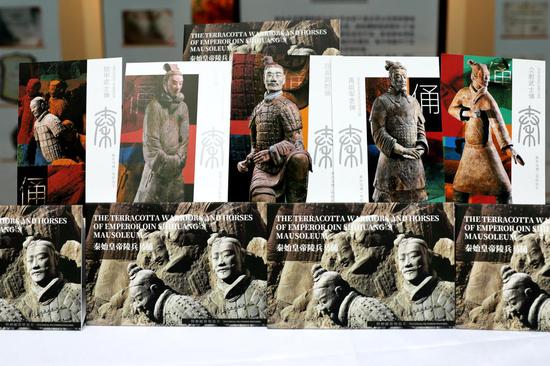By Cheng Jingwei from China News Service (CNS)
May 25, 2023
In China, the lychee has a history of over 2,000 years. There are a lot of famous lines about lychees in the poetry of the Tang dynasty and the iambic verses of the Song dynasty. Du Mu wrote, “At a horse raising red dust the imperial concubine smiled; No one knew it was for the litchi fruit it had brought.” (from The Summer Palace, Tang dynasty) and Su Shi wrote “Eating three hundred lychees every day, I would long live in Ling’nan.” (A Quatrain in Huizhou About Eating Lychee, Song dynasty). From ancient times to the present, the lychee has always been a favorite of the people.
The lychee is a fruit with one of the most profound cultural connotations in China, but where did it originate? Why is the lychee known as the “king of all fruits?” What role has it played in exchanges between China and the West? Chen Houbin, Chief Scientist at the National Lychee and Longan Industry Technology System and Professor at South China Agricultural University, recently gave an exclusive interview to the “W.E. Talk” at China News Service to answer these questions.
Here are excerpts from the interview:
CNS: Why was the lychee so named? What is its origin and cultivation history?
Chen Houbin: The lychee, or lizhi in Chinese, is a native plant of China. When foreign botanists came to China to learn more in the 19th century, the Latin name of the lychee was determined to be Litchi chinensis Sonn., which indicates it is a species native to China. The written literature shows that the lychee has been cultivated for more than 2,000 years.
Research has found that the earliest origin of the lychee was in eastern Yunnan. From there, thanks to the influence of the rivers, water systems, and human migration, it gradually spread eastward and northward to Sichuan, Chongqing, Hainan, Guangxi, Guangdong, Fujian, and even Taiwan, and then spread worldwide from these regions. Therefore, it is irrefutable that lychee originated in China.
In ancient China, famous poets like Du Fu, Bai Juyi, Du Mu and Su Dongpo wrote poems to praise the lychee, which shows how the ancients loved this fruit. During their eras, people suffered from great food shortages, so they were especially delighted to eat lychees whenever they could. But even the members of the imperial family only had access to a limited number of lychees at any one time.
The lychee has a bright red color and white and translucent flesh, with a fragrantly soft or crisp flavor. It ripens from early summer to midsummer. Whether from the perspective of the production season, its quality, or its nutritional value, descriptions of lychee like “Lingnan’s best fruit” or “China’s most characteristic fruit” are no exaggeration in my opinion.
CNS: What are the distinctive features of lychee that set it apart from other fruits? And, after a thousand years of evolution, what are the current lychee varieties?
Chen Houbin: As it has spread, an increasing number of lychee varieties have emerged through natural evolution, hybridization and human selection. At present, there are three to four hundred lychee varieties that have a definite name in China, including the Gui Wei, Nuo Mi Zi, Fei Zi Xiao, Hei Ye, Bai La and Bai Tang Ying. Among them, 30 to 40 varieties are farmed on a large scale in the country, and up to 15 varieties have a planting area of more than 100,000 mu each (approximately 66.67 square kilometers). We can say that China now has more lychee varieties than any other period in history.
Compared with ancient times, great changes have taken place in the characteristics of the modern lychee. First of all, its maturity period has been lengthened, and native varieties that previously had an early and extra-early maturity have been further extended to a medium and late maturity. The earliest ripe lychee is in season in February, and the latest in late September, so the whole maturity period has been extended from a very short period to more than six months. Second, the fruit’s characteristics have been diversified. For example, the fruit’s skin color can be red, green, pink or purplish-red. In addition, the fruit now comes in different sizes, ranging from about 100 grams (the goose egg lychee) to less than 10 grams (the smallest lychee species). What’s more, its high-quality traits are more prominent, for example, the emergence of small-stone or stone-free species, the decrease of acidity and the increase of sweetness in the fruit, less and less fiber in the flesh, and a sweeter and crisper taste.
CNS: Would you please explain the current distribution of the lychee industry in its country of origin, China, and around the world?
Chen Houbin: The lychee is a typical subtropical plant, mainly produced in subtropical areas. The most important requirement for its ecological environment is low temperatures in winter; otherwise, it cannot bloom. Although it can be planted and grown well in tropical areas, it won’t bloom and bear fruit. In temperate and frigid zones, the lychee cannot tolerate the deadly low temperatures in winter, so it cannot be planted in North China either. Generally speaking, its planting areas are within the range of 18°-24.5° N, where the mean temperature, cumulative temperature and precipitation for the year – as well as the intensity and duration of low temperatures in winter – are all optimal for lychees. China’s Guangdong, Guangxi and Fujian provinces are all well within this range.
Therefore, currently, China’s lychee-producing areas are mainly concentrated in Guangdong, Guangxi, Hainan, Fujian, Sichuan and Yunnan. In 2023, the total lychee production area in China is 7.9 million mu (5267 square kilometers), of which 3.96 million mu (2640 square kilometers) is in Guangdong, ranking it first in the country. It is estimated that the total output of lychee in China will be 3.29 million tons in 2023, a year-on-year increase of 31 percent.
In addition, lychees can also be found across China’s Yangtze River Basin, Chishui River Basin, and Jinsha River Basin, mainly thanks to the conditions of these large bodies of water, which minimize the occurrence of low temperatures and frost in winter, enabling the lychee to grow well.
Globally, lychees are mainly farmed in subtropical regions and are concentrated in the northern hemisphere. Outside of China, lychee is mainly found in other parts of Asia, including Vietnam, Thailand, Laos and India. Some countries in the northern hemisphere, such as the United States and Mexico, and some countries in the southern hemisphere, such as South Africa, Madagascar, Australia and Brazil, also grow lychees on a small scale. As consumers in these countries become more and more aware of lychees, there is huge room for the development of the lychee planting industry around the world.
CNS: At present, there are lots of clusters of ancient lychee trees in many parts of Guangdong, among which there are numerous thousand-year-old trees. In Maoming in the province, the oldest lychee tree has existed for more than 1,900 years. What is the practical significance of the protection of ancient lychee trees?
Chen Houbin: The ancient Chinese left rich lychee germplasm resources, so we have the responsibility to protect these valuable resources. I suggest that the contiguous areas of ancient lychee trees be protected as national lychee germplasm resource nurseries or banks.
At the same time, it is necessary to explore and promote traditional lychee culture. Ancient lychee trees have been rooted in one place for thousands of years and withstood numerous natural disasters, yet they still bear fruit every year, demonstrating a spirit of resilience we could all learn from.
In their two thousand years of farming production in Lingnan, the lychee planting system has formed an agricultural cultural heritage with distinctive local characteristics. After the ebb and flow of a thousand years, the spirit of lychees has become an integral part of the human spirit of Lingnan. From a national perspective, lychee cultural heritage has unique Chinese characteristics and a global influence, so it is of great importance that we conduct research into lychees’ protection and development.
CNS: From the introduction of China’s lychee to foreign countries in the 19th century to the present day, when fresh lychees are exported to Europe and the United States, this fruit has played a certain role in the history of China-Western exchange. For this reason, some people claim that “the lychee is a gift from China to the world”. What do you think about this?
Chen Houbin: As one of the most characteristic fruits of China, the lychee is a gift from China to the world. China is an ancient civilization, but also one of the world’s origin centers for cultivated plants. The lychee has played an important role in the integration of Chinese and foreign civilizations, promoting exchanges and mutual understanding. Throughout history, the lychee has spread from China to different countries and regions, enriching their plant species. In terms of biodiversity, the lychee is one of China’s shining examples to the world. In terms of food diversity and nutritional diversity, the lychee is a special fruit that has expanded food sources for people around the world.
For China, our next step is to increase efforts to build a national lychee germplasm resource nursery, striving to create a “Silicon Valley” for the global lychee seed industry. More high-quality and easily stored and transported lychee varieties will be selected and cultivated to promote the high-quality development of the lychee specialty industry, increase farmers’ incomes and help realize the goal of rural revitalization and common prosperity in urban and rural areas. (End)
About the interviewee:
Chen Houbin, male, is a professor and researcher at the College of Horticulture at South China Agricultural University, the Chief Scientist of the National Lychee and Longan Industry Technology System, and a member of the International Society for Horticultural Science and the Chinese Society for Horticultural Science. In recent years, he has been focused on researching lychee germplasm resources, floral physiology and ecology, as well as on the research, development and integrated application of technology to address the biennial bearing of lychee trees.


















































 京公网安备 11010202009201号
京公网安备 11010202009201号